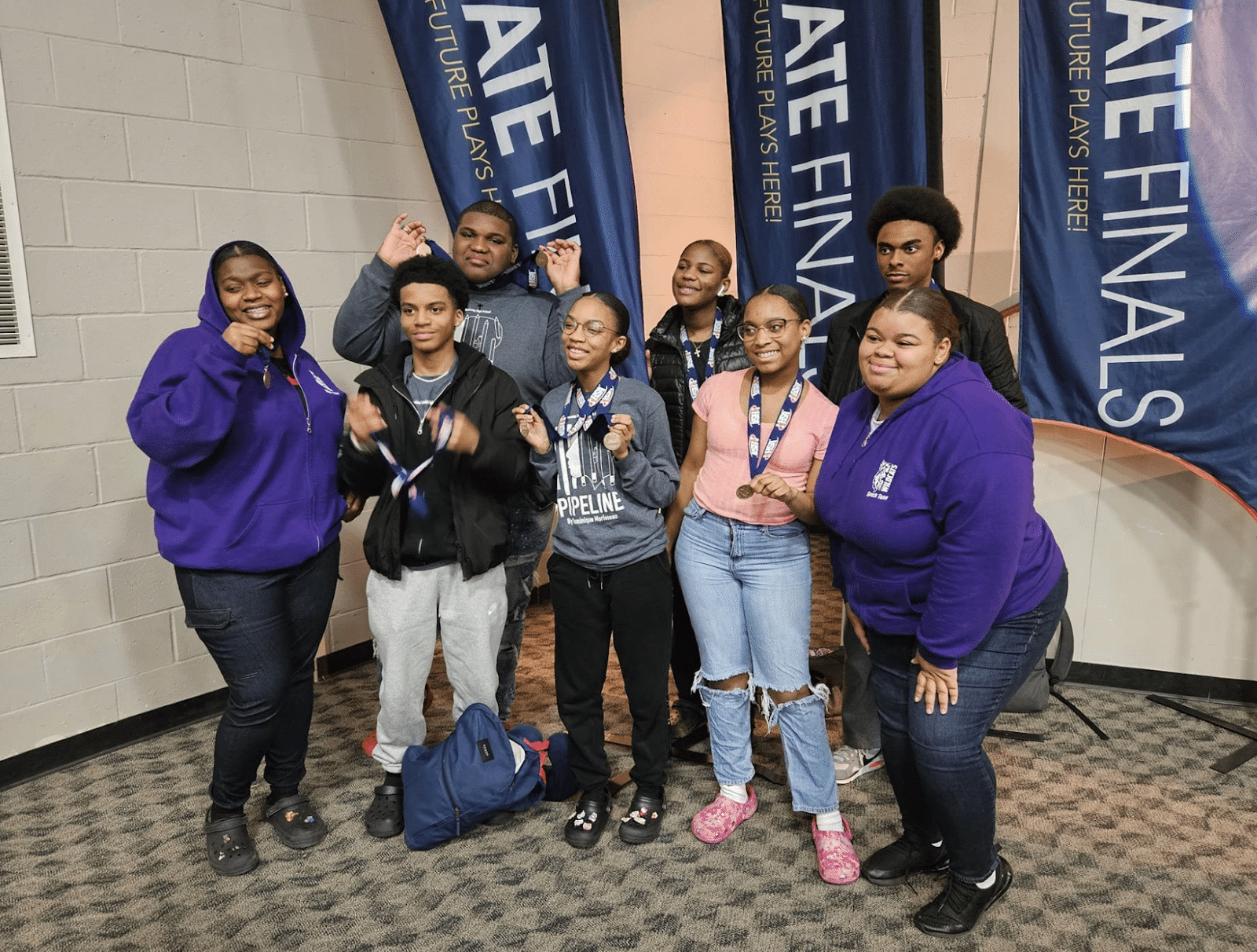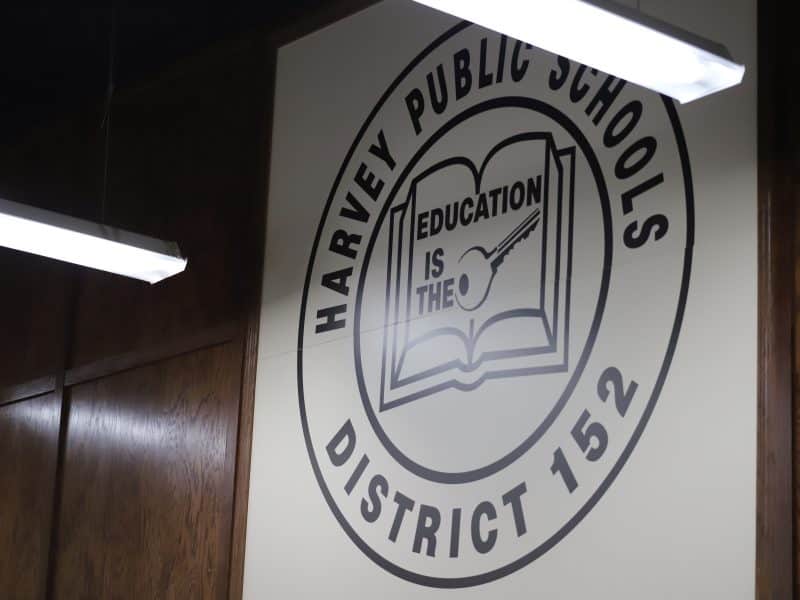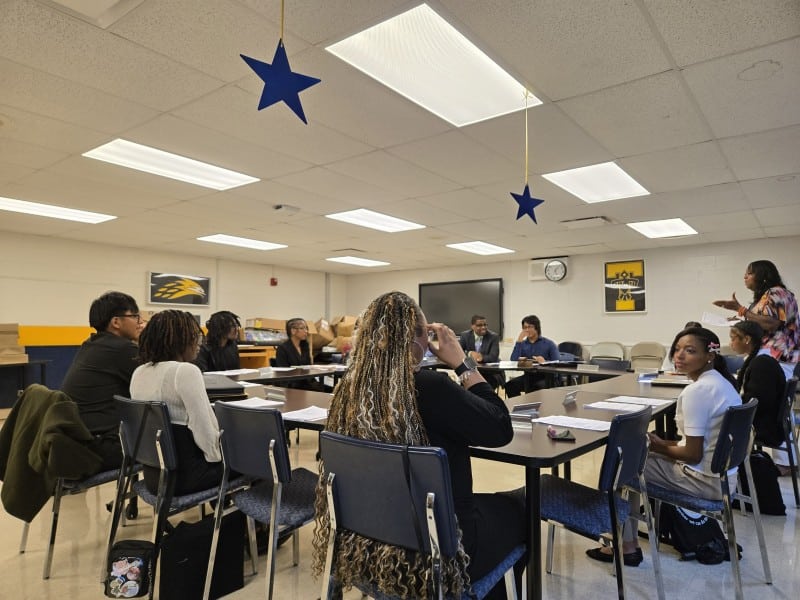Break a (virtual) leg: How Thornton’s arts programs pivoted throughout the COVID-19 pandemic
“[IHSA] really was concerned about equity issues with internet availability, its strength, and how we should not be adjudicating with any personal or implicit bias,” Illinois State High School Association Executive Director Susie Knoblauch told the HWH about curating virtual arts programming during the pandemic.

This report was made possible by the National Association of Black Journalists and Chan-Zuckerberg Initiative Black Press Grant program
“Some of these kids have fully furnished basements with multiple rooms, began Monique Williams, “but if I’m living in Harvey in a small two-bedroom apartment with my [parents] and my two small siblings, finding a quiet space to practice is like finding a needle in the haystack.”
Williams is a Thornton drama coach. In the earliest days of the COVID-19 pandemic, high school speech and drama programs resorted to virtual performances to finish out their seasons.
While she was excited that the programs were able to continue, Williams suggested the move revealed certain social and economic disparities. Housing experiences, shaped by class forces, she said, created stark differences in practice time.
Some schools in more affluent communities had the resources to produce high-quality performances. Thornton was not one of them. “Our neighbors in Flossmoor…that’s a different demographic,” Williams went on.
“The Downers Grove’s, the Flossmoor’s…those school districts that have full AV programs, they were able to go in and partner with their broadcasting department and get really good quality stuff whereas our program hasn’t really been invested in in our district,” Williams added.
Even when young performers are in the midst of a global hazard, the show must go on…line. A digital divide, housing affordability crisis, and disinvestment in education dramatically shaped how students adapted virtual speech and drama programming.
But it also created new opportunities to reimagine the arts experience.
Fade to black
For decades, Thornton’s boasted notoriety as one of the most renowned speech and drama programs in the state. It’s catapulted thespians to Broadway, the silver screen, and political chambers. Danitra Vance, the first Black woman cast member on NBC’s Saturday Night Live, got her start on the Wildcat stage.
The speech team placed third in four different state competitions and second in the 2019 IHSA state finals. Thornton’s drama program was crowned state champions for a 2019 production of “Father Comes Home From the Wars.”
The pandemic put a wrench in efforts to clinch another state title.
“We were looking to try to get a couple of championships with Drama and Group Interpretation that year, and we weren’t able to do that because IHSA wasn’t prepared to do virtual competitions right out the gate,” Williams said.
“We had a lot of four-year seniors,” she added. “The seniors that year didn’t get an opportunity to (compete in) their last competition before they graduated, which they were really disappointed about.”
The long Speech, Drama, and Group Interpretation season has come to a close. Thorntons Contest Play finished 4th in…
Posted by Brad Ablin on Sunday, March 26, 2023
Susie Knoblauch, Illinois State High School Association Assistant Executive Director and administrator for drama and speech, said the association started brainstorming ways for competitions to resume safely. “We were looking at ways to persuade our board that we could offer these championships virtually, that it could be done in a fair, equitable manner and that we would still be able to crown champions,” Knoblauch said.
Beginning in the 2021 school year, arts programming began utilizing virtual formats for their rehearsals and performances.
Brad Ablin, Thornton’s speech coach and Drama and Group Interpretation director, said students would create areas in their house to rehearse, and coaches would work with the students over Google Meets. “For their performances, we would record their scenes, and then we had help from an outside source to tie them together to look like a play,” Ablin said.
“I heard stories of folks congregating in parking lots and driveways to do some of these coaching sessions if weather permitted,” Knoblauch said. “We had some schools actually do their school plays outside on football fields.”
‘Needle in the haystack’
While the virtual (and outdoor) format allowed for students to continue their craft, the experience did not come without its struggles. Albin said that one obstacle for both students and directors were technological faux paus.
In a recent study from the SAGE Public Health Emergency Collection, researchers found that even with public resources, a racial digital divide remains. “Black and Latinx households both have greater needs for public resources for remote learning, and schools and school districts serving Black and Latinx families may have fewer resources to meet those needs,” researchers wrote.
They reported that 13.4 percent of Black households and 13 percent of Latinx households do not always or usually have access to remote learning tools—even when they’re provided by schools.
That figure drops to 7.4 percent for white households experiencing the same issue.
“[Students] were having such a hard time, whether it be faulty internet connection, and finding space to practice in quiet and solace,” Williams said. “Some of them were having to take on extra duties and responsibilities with younger siblings.”
“One main issue our program faced that year was the inequity in both the quality of the devices that our students were using as well as the fact that other schools were able to be in-person for some of the competitions, and we chose to be cautious,” Ablin said.
Competition scores reflected a lot of this. Williams said students would get ranked down for certain disadvantages such as poor sound quality and unstable internet connection.
“[IHSA] really was concerned about equity issues with internet availability, its strength, and how we should not be adjudicating with any personal or implicit bias,” Knoblauch said. “We really just had to look at the student and their performance and not let all the things around them distract us.”

She was proud of students for their perseverance, but felt “we probably would’ve been able to do better than what we did if we had better resources available for the students in this demographic,” Williams said.
Virtual performances, the coaches found, created new opportunities for programs to adapt.
“We learned that there are more ways to do things than we knew,” Ablin said. “For instance, we have now incorporated more technology into our drama programs, partly I think because we learned how to use some of it and saw [the] benefits of it.” The drama team enhanced its lights and sounds during last year’s performance of “Dreamgirls.”
“I think this is where folks who had the ability to be creative problem solvers really leveled to the top because rather than [saying], ‘we can’t do it,’ we were looking at how we can do it, “Knoblauch said. “It was quite rewarding because students needed something positive to work towards, and it kept them connected with their school communities.”
Students also displayed a lot of resilience through those difficult times, according to Williams. Remote learning and virtual formats for drama and speech—along with personal circumstances—led a lot of students to drop out of the competition and quit the team.
However, some students were able to fight through. “They [students] essentially kept that activity alive. They saved it,” Williams said. “If we had no children to even participate, then what a loss of the program.”
The toll of fleeting respite
Extracurricular activities such as drama and speech offer a special outlet for youth to cope with mental health problems. COVID-19 made a bad problem worse.
About 37 percent of high school students reported “persistent feelings of sadness and hopelessness” in 2019, according to a trends report from the Centers for Disease Control and Prevention. By 2021, that figure jumped to 44 percent, where high school students reported experiencing those same persistent feelings since the pandemic began, according to a CDC survey. Thirty-seven percent of students reported experiencing poor mental health during the pandemic.
Shaniqua Jones, PhD is a former Thornton Township Schools District 205 administrator and founder of Purple Path, an organization that leverages restorative justice principles and wraparound services to improve young people’s well-being.
She said the performing arts gives youth a creative, innovative way to express themselves without a traditional graded system and improve their soft skills such as communication. However, access to these programs are often jeopardized.
“Because of lack of funding, lack of resources and lack of humanity in education, we don’t have those different programs to sustain,” Jones said. “They come and go.”
Jones said while she believes there are efforts being made to address youth mental health, they’re made from the top-down, and the people at the forefront everyday are often left out of the conversation.
The solution is to start including the people who are already doing the work to make improvements, including the youth themselves, she added. “We gotta learn how to bridge those gaps. We have to redefine the village. We have to get the youth involved,” Jones said.
“We have to make sure they’re a part of that conversation so they know that people are literally advocating for them in terms of positive, sustainable change.”
We’re filling the void after the collapse of local newspapers decades ago. But we can’t do it without reader support.
Help us continue to publish stories like these



